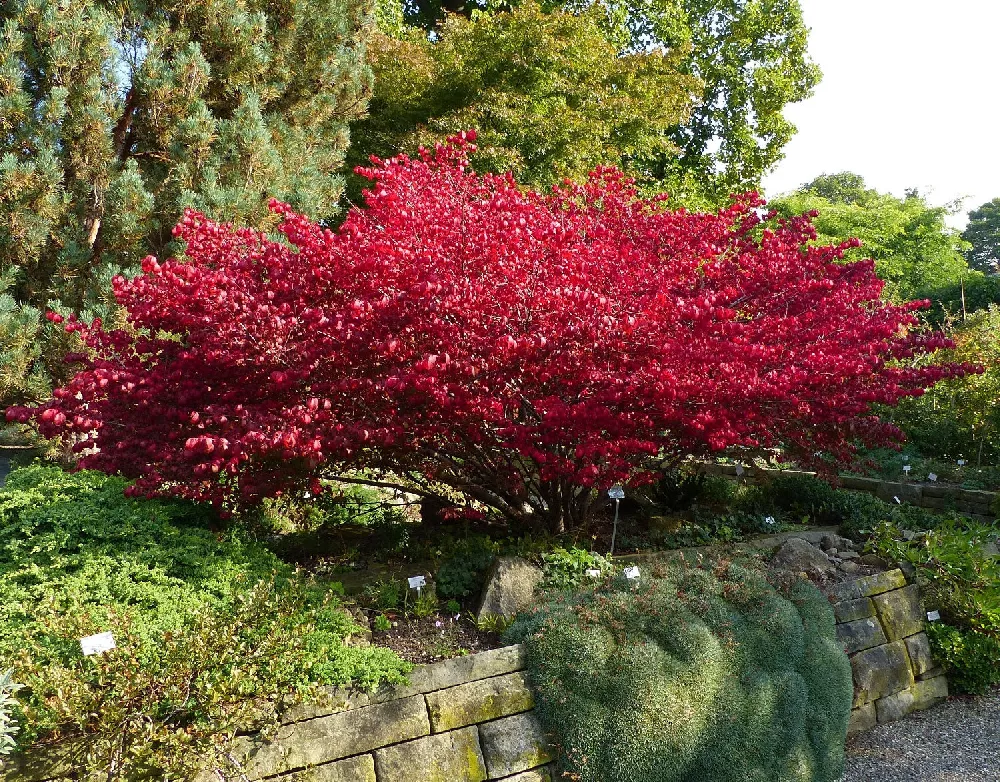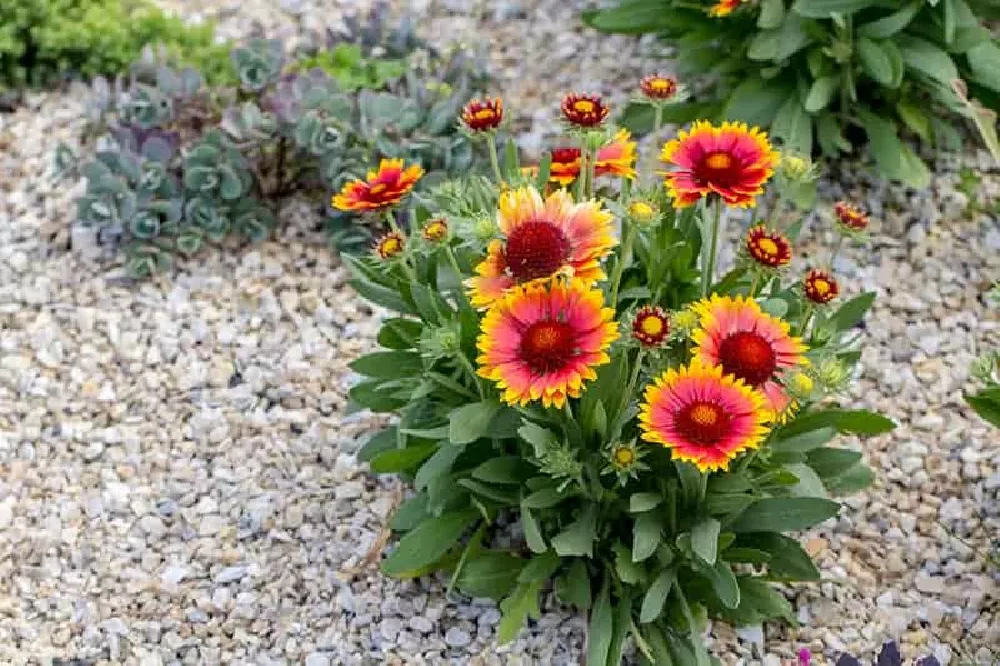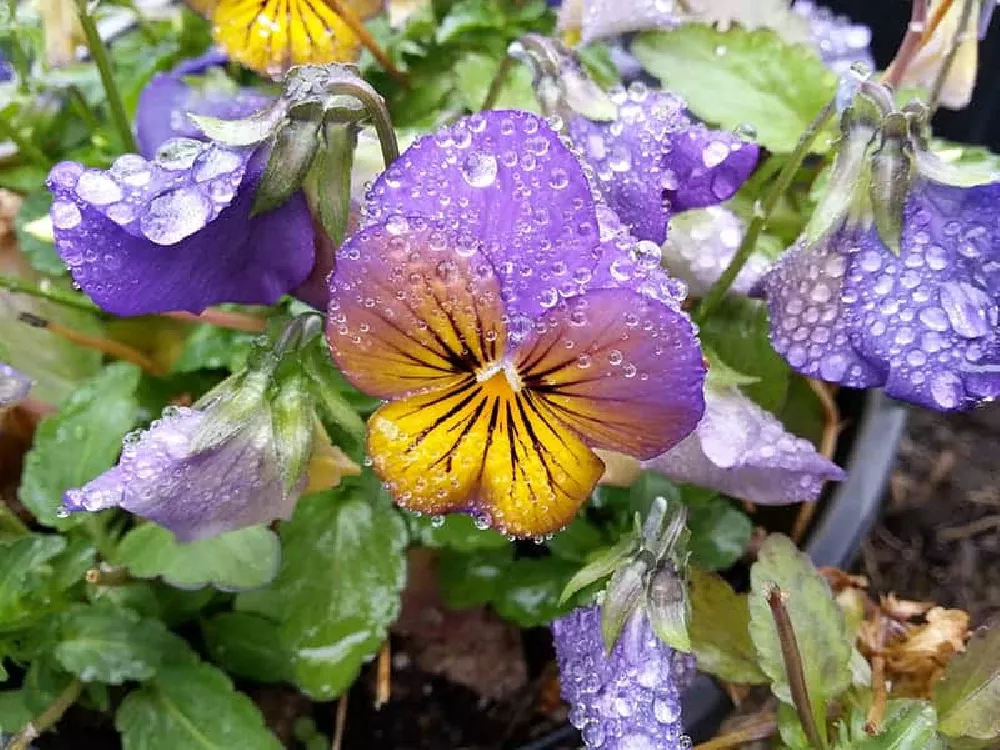- Home >
- Ornamental Plants >
- Dense Spreading Yew
Dense Spreading Yew for Sale - Buying & Growing Guide
The species called Taxus x media 'Densiformis,' or Dense Spreading Yew, is a low-growing needled evergreen with a thick set of foliage, as the common name suggests. However, reliable foliage and a manageable form are not the only impressive features of this plant. The Dense Spreading Yew also produces a set of bright red fruits that serve as a perfect contrast to the foliage. Overall, this plant proves to be very easy to care for and is one of the best options for any foundation planting scheme.
- Consistent evergreen needles make an excellent backdrop for other ornamentals
- Bright red fruits stand out against the foliage
- Easy care routine and great resistance to pests and diseases
Enter your zip code to find nearby stores that may carry this plant.
Plant Care
Sunlight

Grows in either full sunlight or partial shade, about three to six hours of light per day.
Watering
Water about once per week during the growing season. Increase as needed during droughts.
Fertilizing

Fertilize once in spring with a nitrogen-rich fertilizer.
Planting and Care
Planting instructions
You can choose either an area of full sunlight or a partially shaded area to plant your Dense Spreading Yew. The soil in that location should have decent drainage but be relatively moist as well. Beyond that, you will find that the Dense Spreading Yew is quite adaptable and will thrive in most growing locations. Remember, as the name indicates, this species tends to spread horizontally more than it does vertically, which means you should give it at least a few feet of space in all directions into which it can spread.
Watering and nutrients
Throughout its life, your Dense Spreading Yew will benefit from a regular watering schedule. Typically, during the growing season, you should water this plant about once per week. During periods that are exceptionally hot or dry, you should increase your watering frequency to about twice per week or more. You can feed your Dense Spreading Yew once every year during the early spring with a fertilizer that is high in nitrogen. However, while feeding will support healthy growth, it is not likely to quicken the growth rate.
Pollination
In most cases, yews come in male and female versions, meaning that you need to have one of each if you wish it to pollinate and reproduce. Interestingly, the cultivated yew, known as Dense Spreading Yew, is a specifically female variety. Since this plant is female, it is able to bear the lovely red fruits that are so appealing to the eye. If you want to enjoy the sight of those fruits, you should plant a male yew nearby so that its pollen can reach your Dense Spreading Yew via wind, resulting in fruit production.
Pruning
You can prune your Dense Spreading Yew any time between late winter and mid-spring. However, this plant does not need much pruning as it is a slow-growing species that will not expand rapidly beyond your control. Pruning for this plant should be light and include clipping only the outermost foliage. This style of pruning encourages your Dense Spreading Yew to develop a fuller and more rounded form. Still, without pruning, your Dense Spreading Yew will likely remain healthy and have a pleasing form as well.
Pests and diseases
A typical yew shrub may face several pest and disease issues in its life, including, but not limited to, root rot and mealybugs. However, the good news is thatDense Spreading Yew is known to have fantastic pest and disease resistance, meaning that you won’t need to worry too much about infestations and infections during this plant’s lifespan. With that said, nearly all yews remain vulnerable to damage from larger animals. Deer browsing is one of the more common reasons your Dense Spreading Yew may be missing some leaves.
Achieving maximum results
One important tip to remember when pruning a Dense Spreading Yew, or most coniferous plants for that matter, is that these plants will not sprout new growth from old wood. That means that if you remove too much of the outer foliage, revealing the old wood behind it, then you will probably be left with a permanent bare patch on your plant. As such, your pruning should involve nothing more than removing small portions of the outer foliage to avoid cutting off too much at one time.
FAQs
Is the Dense Spreading Yew plant poisonous?
Despite looking quite appetizing, you should never attempt to eat the bright red berry-like fruits of a Dense Spreading Yew plant. Technically, the red fleshy part of this fruit is not poisonous itself. However, every other part of this plant contains a lethal toxin called taxine. This poison quality is also present in nearly any other yew that you come across. As such, you should be very careful about allowing pets and children to go near this plant unsupervised.
How fast does the Dense Spreading Yew grow?
The name “Dense Spreading Yew” seems to suggest that this plant can expand somewhat quickly. However, that is not the case at all. Instead, the Dense Spreading Yew cultivar is a slow-growing plant that adds about three to six inches of new growth every year. That slow-growth amounts to a mature size that includes a height of about three to four feet and a spread of about four to six feet.
How do you plant a Dense Spreading Yew hedge?
Yews are popular hedge plants, but if you wish to make a hedge out of your Dense Spreading Yew, you need to know how to plant it correctly. Mainly, you should pay attention to the spacing between each Dense Spreading Yew plant. While these plants grow slowly, they are also quite wide by nature. Generally, you should give about three to four feet of space between each plant, then allow them to grow together in a continuous mass of foliage. The closer you space each plant, the sooner your hedge will grow in and vice versa.
Compare Similar Products
You can't add more Product Name - Product size to the cart.
OK








